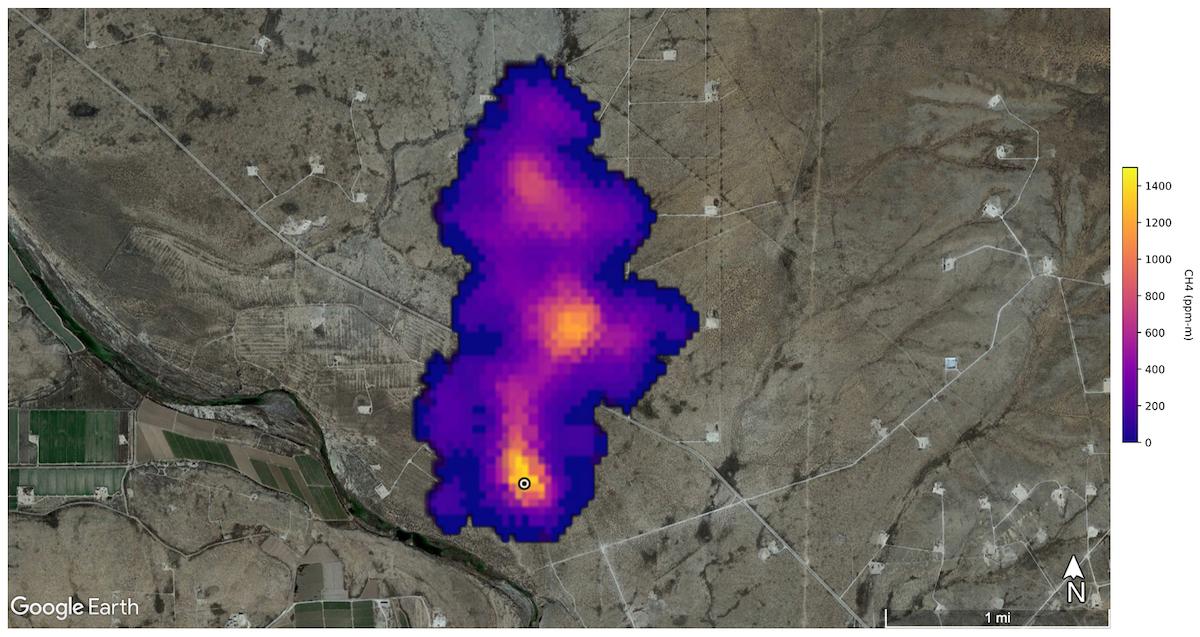From Outer Space, NASA's EMIT Identifies Methane "Super-Emitters" on Earth
Published Oct. 26 2022, 11:33 a.m. ET

East of Hazar, Turkmenistan, a port city on the Caspian Sea, 12 plumes of methane stream westward. The plumes were detected by NASA’s EMIT mission and some of them stretch for more than 20 miles.
Space exploration does not only help us discover things happening on other planets — some space missions can tell us a lot about what is happening on our home planet, too. And NASA’s EMIT program’s recent mission discovered a lot about the forceful greenhouse gas methane, by identifying 50 methane “super-emitters” around planet Earth.
What is EMIT? NASA’s latest mission focuses on Earth and climate change.
NASA’s EMIT is short for NASA’s Earth Surface Mineral Dust Source Investigation, which was installed on the International Space Station in July 2022.
EMIT was designed to learn more about how airborne dust particles affect the climate on Earth. However, the scientists behind EMIT have found that this mission can also help locate places on Earth that emit high amounts of methane, as explained in a post on NASA’s website.

This image shows a methane plume 2 miles long that NASA’s Earth Surface Mineral Dust Source Investigation mission detected southeast of Carlsbad, N.M.
The greenhouse gas methane’s global warming potential is more than 80 times higher than carbon dioxide’s global warming potential (in the 20 years after it is emitted); it is also accountable for at least 25 percent of current global warming, according to the UN Environment Programme.
As explained by NASA, methane absorbs infrared light in a pattern called a spectral fingerprint (aka spectral line). Because of this, EMIT’s imaging spectrometer is able to clearly identify areas emitting high amounts of methane, and over the past few months of operating EMIT, the team behind it has located about 50 “super-emitters.”
What are methane super-emitters?
Super-emitters refer to pieces of infrastructure (such as fossil fuel, agricultural, or waste facilities), that emit immense amounts of methane. The super-emitters are located across the Southwestern U.S., Central Asia, and the Middle East.
Some of the most significant plumes in those three areas were located by oil fields near Carlsbad, N.M.; by oil and gas infrastructure near Hazar, Turkmenistan; and by a landfill near Tehran, Iran.
The NASA researchers specifically studied those three world regions as they contain already-established methane hotspots. However, the team was surprised to see just how pollutive some of these areas were.
“Some of the plumes EMIT detected are among the largest ever seen – unlike anything that has ever been observed from space,” stated Andrew Thorpe, a NASA Jet Propulsion Laboratory research technologist who led this project. “What we’ve found in … just a short time already exceeds our expectations.”

A methane plume at least 3 miles long billows into the atmosphere south of Tehran, Iran. The plume, detected by NASA’s EMIT mission, comes from a major landfill, where methane is a byproduct of decomposition.
So what will NASA’s EMIT do with this information on methane super-emitters?
David Thompson, EMIT’s instrument scientist, stated that EMIT’s ability to identify major methane sources is “a unique capability that will raise the bar on efforts to attribute methane sources and mitigate emissions from human activities.”
“This exciting new development will not only help researchers better pinpoint where methane leaks are coming from, but also provide insight on how they can be addressed — quickly,” added NASA Administrator Bill Nelson, speaking about EMIT’s findings. “EMIT is proving to be a critical tool in our toolbox to measure this potent greenhouse gas — and stop it at the source.”
Kate Calvin, NASA’s chief scientist and senior climate advisor, added that EMIT’s capacity to discern methane super-emitters “offers a remarkable opportunity to measure and monitor greenhouse gases that contribute to climate change.”
Basically, EMIT’s data is just another piece of evidence that human activities like agriculture, managing waste, and extracting oil and gas produce high levels of methane, which directly causes global heating. World leaders and industry leaders need to take responsibility for their immense contribution to the climate crisis and regulate these pollutive activities.
And going forward, EMIT will continue gathering data on the topic. Soon, it will start surveying areas not known for high greenhouse gas emissions, where Robert Green, EMIT’s principal investigator at JPL, expects “it will find plumes that no one expects.”